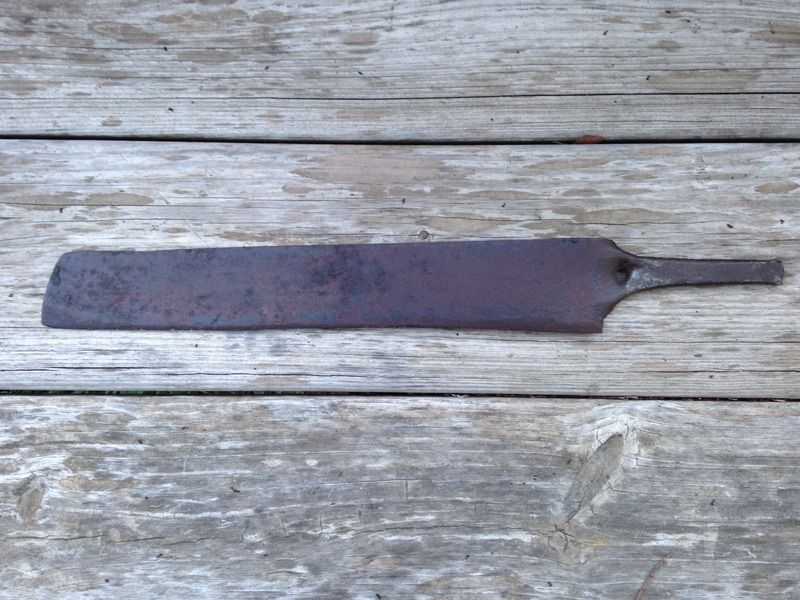- Joined
- Jan 3, 2013
- Messages
- 20,091
- Reaction score
- 1,018
Where does the machete fit in in the 18th and 19th centuries?
I have one I use all the time ......it is extremely versatile
I have one I use all the time ......it is extremely versatile



colorado clyde said:I probably should have been more specific....My everyday machete is actually a cane knife. But , I call it a machete....
I find it to be extremely versatile.
Native Arizonan said:I've seen pictures of corn knives that ran from looking like the above cane knife blade to sickles. I was searching around for references Revolutionary War corn knives and hit a period story in the History of New Haven County, Conn. volume 1, pp 437-438, where a AWI American soldier named McGaughey, from East TN, claimed to have killed an Indian with a corn knife on the Tennessee River during the War.
It would be hard to imaging trying to use a sickle shaped corn knife to fight with, so I would imagine it was more like the fascine knife, or the cane knife; but anybody's guess is as good as mine. It was a big agricultural blade and was used in a fight.
Kansas Volunteer said:In the southwest the Spanish espada ancha evolved from a sword into a machete from the late 1700s into the 20th. There used to be good information on this online perhaps there still is.
In the southwest the Spanish espada ancha evolved from a sword into a machete
Enter your email address to join: